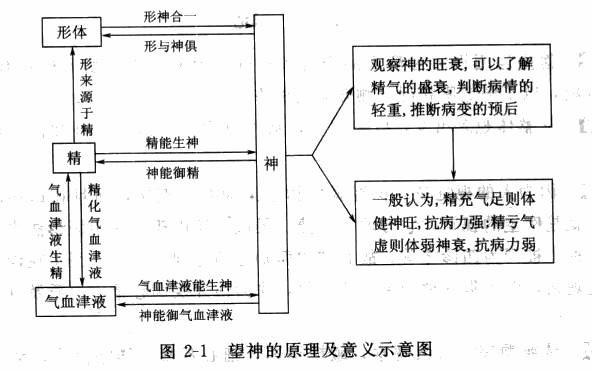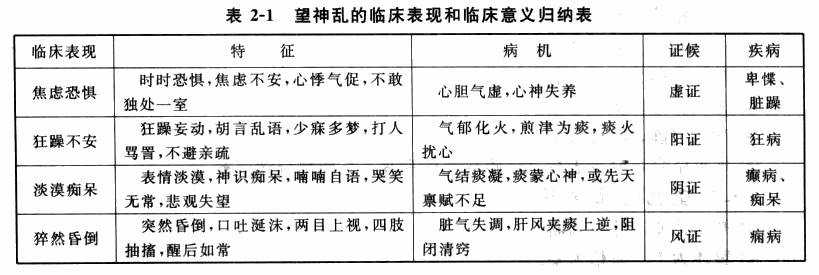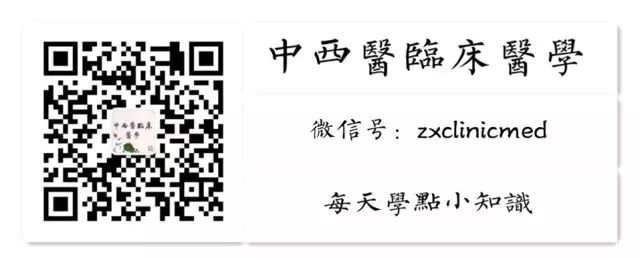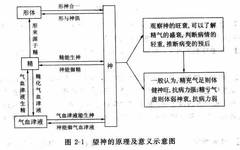
TCM Diagnosis • Observation Diagnosis
Whole Body Observation Diagnosis
【Meaning】 Also known as holistic observation diagnosis, it is a method where the physician first observes the patient’s spirit, complexion, body shape, posture, and other overall manifestations to understand the overall condition of the disease.
【Significance】 Through observation, one can gain a general impression of the cold-heat, deficiency-excess, and severity of the disease, laying the foundation for further detailed understanding of the condition.
【Content】 Observation of spirit, color, body shape, and posture.
I. Observation of Spirit
【Meaning】
(1) Spirit: Spirit refers to the totality of life activities in the human body, a high-level summary of the phenomena of life. It includes the broad sense of spirit, which is “shenqi” (the external manifestation of organ function activities or the external manifestation of overall life activities); and the narrow sense of spirit, which is “shenzhi” (the mental, conscious, cognitive, and emotional activities of a person). Spirit is a comprehensive expression of the functional activities of the body’s organs and the mental and emotional activities.
(2) Observation of Spirit: This refers to the method of judging the condition of the disease by observing the overall manifestations of life activities in the human body. The overall manifestations include the external signs of organ functional activities and the state of mental and emotional activities, which is a comprehensive judgment of “shenqi” and “shenzhi”.
(A) Principles and Significance of Observation of Spirit

1. Relationship between Spirit and Body
Spirit is the embodiment of life activities in the body; it cannot exist independently of the body, and the body originates from essence. The “Lingshu • Ben Shen” states: “The origin of life is called essence, and the interaction of the two spirits is called spirit.” The body is the substance of spirit, and spirit is the function of the body; only with form can there be spirit. When the body is strong, the spirit is vigorous; when the body is weak, the spirit is weak. Therefore, it is said that body and spirit are one, and both body and spirit coexist.
2. Relationship between Spirit and Qi
The three treasures of a person are essence, qi, and spirit. Spirit arises from congenital essence and must rely on the continuous nourishment of postnatal food essence. Only when both congenital and postnatal essences are sufficient, and the qi, blood, and body fluids generated from essence are abundant, can the organ functions be normal, and the body can exhibit spirit. Essence and qi (blood and body fluids) can generate spirit, and spirit can control essence and qi; spirit is a comprehensive reflection of the activities of qi, blood, body fluids, and organ meridian functions. Sufficient essence and qi lead to a healthy body and vigorous spirit, with strong resistance to disease. Even if there is illness, it is often mild, and the prognosis is better; when essence and qi are deficient, the body is weak, the spirit is diminished, and resistance to disease is weak, leading to multiple illnesses and a poorer prognosis.
3. Clinical Significance
Observing the rise and fall of the patient’s spirit can help understand the rise and fall of their essence and qi, infer the severity of the disease, and assess the prognosis, hence the saying, “Those who possess spirit thrive, while those who lose spirit perish.”
(B) Methods of Observation of Spirit
(1) Meeting Spirit with Spirit: The physician uses their own spirit to connect with the patient’s spirit to understand the patient’s mental state and overall functional status.
(2) Immediate Intuition: Upon first contact with the patient, before the patient is aware, the physician should observe calmly and objectively, relying on intuition to quickly gain a true impression of the patient’s spirit’s rise and fall.
(C) Specific Manifestations of Spirit
Spirit is the overall embodiment of life activities in the human body, specifically manifested in four aspects during observation: gaze, complexion, expression, and posture, with the observation of the eyes being the focus of spirit observation.
(1) Gaze: The gaze is the external reflection of the heart’s spirit and is the focus of spirit observation. The activity of the eyes is directly controlled by the heart’s spirit; the visual function of the eyes can reflect the rise and fall of organ essence and qi. Therefore, observing the eyes is the best way to understand the rise and fall of spirit.
(2) Complexion: This refers to the color of the skin all over the body (mainly the face). “Color is the flag of spirit”; the luster or dullness of the skin is an important manifestation of the rise and fall of organ essence and qi.
(3) Expression: This is the mental awareness and facial expressions of a person, which are external manifestations of the heart’s spirit and the rise and fall of organ essence and qi.
(4) Posture: The dynamic state of the body, whether it is plump or thin, whether movements are smooth or difficult, is also an external manifestation of the strength or weakness of the body’s functions and is a major indicator of the quality of spirit.
(D) Classification and Judgment of Spirit
1. Possessing Spirit (Having Spirit)
【Meaning】 Also known as “having spirit”, it is the manifestation of sufficient essence and qi, with stable organs and vigorous spirit.
【Clinical Manifestations and Mechanism】
Clear consciousness, rosy complexion, subtle and natural expressions, clear and correct speech—sufficient heart essence and qi;
Bright and lively eyes, responsive reflections, coordinated and agile movements, and relaxed posture—sufficient liver and kidney essence and qi;
Well-toned muscles, steady breathing—sufficient lung and spleen essence and qi.
【Clinical Significance】“Possessing spirit” is the manifestation of a healthy person, indicating abundant essence and qi, a healthy body, and normal organ functions, representing a state of no disease. Even if there is illness, if essence and qi are not diminished, the disease is mild and easily treatable; even if the condition is severe in some aspects, it is still easier to cure, whether it is a new illness or a chronic condition, the prognosis is often good.
2. Deficient Spirit (Insufficient Spirit)
【Meaning】Also known as “insufficient spirit”, it is the manifestation of insufficient essence and weak spirit.
【Clinical Manifestations and Mechanism】
Lack of energy, sluggish thinking, dull complexion—insufficient heart essence;
Soft muscles, fatigue, low energy, quiet speech—insufficient lung and spleen essence;
Dull eyes, lack of spirit, slow movements—insufficient liver essence.
【Clinical Significance】Light deficiency of essence and qi, with relatively weak body functions, often seen in mild illnesses, recovery periods, or in weak individuals, representing a deficiency syndrome, especially organ deficiency syndrome.
3. Lost Spirit (No Spirit)
(1) Loss of Spirit due to Essence Deficiency
【Meaning】It is the manifestation of essence deficiency, qi loss, and spirit decline.
【Clinical Manifestations and Mechanism】
Mental fatigue, blurred consciousness, dull complexion, apathetic or stiff expressions, disordered speech—decline of heart essence;
Dull eyes, lack of luster, sluggish pupils, difficult movements, or forced postures, slow reactions, incontinence—decline of liver and kidney essence;
Weak or rapid breathing, emaciation, and thin body (loss of significant muscle mass)—decline of lung and spleen essence.
【Clinical Significance】Severe damage to essence and qi, functional decline, often seen in chronic or severe illnesses, indicating a serious condition, representing a deficiency syndrome, with a poor prognosis.
(2) Loss of Spirit due to Excessive Pathogenic Factors
【Meaning】It is the manifestation of excessive pathogenic factors causing confusion of spirit.
【Clinical Manifestations and Mechanism】
Confused consciousness, incoherent speech, groping for clothes or bed—excessive pathogenic qi disturbing the spirit, invading the heart;
Sudden collapse, confused consciousness, clenched hands, tight jaw—liver wind with phlegm obstructing the clear orifices, blocking the meridians.
【Clinical Significance】 Severe functional impairment of the body, imbalance of qi, blood, and body fluids, often seen in acute or new illnesses, representing a real syndrome, also indicating a serious condition. Active treatment is necessary; otherwise, the prognosis is poor.
4. False Spirit
【Meaning】In individuals with chronic or severe illness, where essence and qi have already severely declined, there may suddenly appear some temporary “improvement” in spirit, which is a false manifestation.
【Clinical Manifestations and Mechanism】
(1) Consciousness: Originally confused or extremely fatigued, suddenly seeming clear or better, wanting to see loved ones.
(2) Gaze: Originally dull or with sluggish pupils, suddenly appearing bright, but the light is superficial.
(3) Complexion: Originally dull or pale, suddenly appearing rosy, but with flushed cheeks like makeup.
(4) Speech: Originally low and intermittent, suddenly becoming talkative, but the speech is often simple and repetitive, with mental agitation.
【Clinical Significance】Severe depletion of organ essence and qi, with vital energy about to collapse, yang not contained by yin, leading to a separation of yin and yang, often compared to “returning light” or “flickering lamp” by ancient practitioners, often a sign before the death of critically ill patients.
5. Confused Spirit
【Meaning】Refers to disordered consciousness. Its characteristics are often recurrent episodes with no loss of consciousness during remission, mainly manifesting as changes in the heart’s control of consciousness.
【Clinical Manifestations and SignificanceSee the table below.



